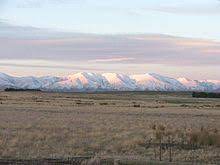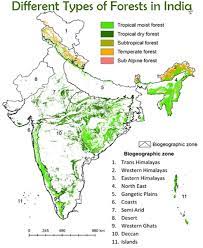Class 11 Geography NCERT Solutions Chapter 1 Geography as a Discipline
Geography as a Discipline is the first chapter of Class 11 Geography NCERT. We have prepared the Class 11 Geography NCERT Solutions Chapter 1 for your ready reference.
Question 1: Multiple choice questions.
(i) Which one of the following scholars coined the term ‘Geography’?
(a) Herodotus
(b) Erathosthenese
(c) Galileo
(d) Aristotle.
The correct answer is: (b) Erathosthenese
Erathosthenese, a Greek mathematician, geographer, and astronomer, is credited with coining the term “Geography.” He lived during the 3rd century BCE and made significant contributions to various fields, including geography.
(ii) Which one of the following features can be termed as ‘physical feature’?
(a) Port
(b) Road
(c) Plain
(d) Water park.
The correct answer is: (c) Plain
A “plain” is a physical feature in geography. It refers to a large, flat or gently rolling land area with low relief, characterized by minimal variation in elevation and often covered with grasses or shrubs. Plains are one of the primary types of landforms in the Earth’s surface and are usually found at lower elevations compared to mountains and plateaus.

(iii) Make correct pairs from the following two columns and mark the correct option.

(a) 1B,2C,3A,4D
(b) 1A,2D,3B,4C
(c) 1D,2B,3C,4A
(d) 1C,2A,3D,4B.
Ans: (d)
Meteorology → C. Climatology
Demography → A. Population Geography
Sociology → D. Social Geography
Pedology → B. Soil Geography
(iv) Which one of the following questions is related to cause-effect relationship?
(a) Why
(b) Where
(c) What
(d) When.
The correct answer is: (a) Why
The question “Why” is related to cause-effect relationships. When we ask “Why,” we are seeking the reasons or causes behind a particular event or phenomenon. Understanding the cause-effect relationship helps us comprehend the factors that lead to certain outcomes or results.
(v) Which one of the following disciplines attempts temporal synthesis?
(a) Sociology
(b) Geography
(c) Anthropology
(d) History.
The correct answer is: (d) History
History attempts temporal synthesis by studying and analyzing past events, developments, and actions of individuals, societies, and civilizations over time. It aims to create a comprehensive understanding of historical processes and how they have shaped the course of human history. Through temporal synthesis, historians can establish connections, patterns, and causality between past events to provide insights into the evolution of cultures, societies, and civilizations.
NCERT Solutions for Class 11 Geography : Fundamentals of Physical Geography
2. Answer the following questions in about 30 words.
(i) What important cultural features do you observe while going to school? Are they similar or dissimilar? Should they be included in the study of geography or not? If yes, why?
Ans: We encounter a variety of establishments, such as shops, theaters, roads, places of worship (e.g., temples, mosques, churches), houses, and government offices while going to school. These diverse entities exemplify cultural attributes. Although distinct from one another, these features hold significance in human geography. Therefore, they must be incorporated into the study of geography to gain insights into the complexities of human societies. Social and cultural geography heavily relies on these elements as they constitute an integral part of the field.
(ii) You have seen a tennis ball, a cricket ball, an orange and a pumpkin. Which one amongst these resembles the shape of the earth? Why have you chosen this particular item to describe the shape of the earth?
Ans: The Earth is not a perfect sphere; it is an oblate spheroid, which means it is slightly flattened at the poles and bulges at the equator, resembling the shape of an orange

(iii) Do you celebrate Van Mahotsava in your school? Why do we plant so many trees? How do the trees maintain ecological balance?
Ans: Yes we celebrate Van Mahotsava in our school. Van Mahotsava is an annual tree-planting festival celebrated in the first week of July. “Van” means forest, and “Mahotsava” means festival.

We plant trees for several important reasons:
- Environmental Benefits: Trees play a crucial role in combating climate change by absorbing carbon dioxide during photosynthesis and releasing oxygen. They act as carbon sinks, helping to reduce greenhouse gas emissions and improve air quality.
- Biodiversity: Trees provide habitat and food for a wide variety of wildlife, supporting biodiversity and maintaining ecosystems.
- Soil Protection: Tree roots prevent soil erosion by holding the soil in place, reducing the risk of landslides and improving soil quality.
- Water Management: Trees help regulate the water cycle by absorbing and storing water, reducing the risk of floods and maintaining steady water supply in rivers and streams.
- Aesthetic and Recreational Value: Trees enhance the beauty of the landscape and provide recreational spaces for people to enjoy.
Trees maintain ecological balance through various mechanisms:
- Carbon Sequestration: Trees absorb carbon dioxide from the atmosphere, helping to reduce the concentration of greenhouse gases responsible for global warming.
- Oxygen Production: Through photosynthesis, trees release oxygen into the atmosphere, which is vital for the survival of all living organisms.
- Habitat for Wildlife: Trees provide shelter and food for numerous plant and animal species, supporting a diverse and balanced ecosystem.
- Soil Conservation: Tree roots stabilize the soil, preventing erosion and maintaining fertile soil for plant growth.
- Regulating Climate: Trees moderate temperatures by providing shade and influencing local microclimates.
- Water Regulation: Trees play a role in controlling the water cycle by absorbing and transpiring water, helping to prevent floods and droughts.
Overall, trees are essential for maintaining ecological balance, preserving biodiversity, and ensuring a healthy and sustainable environment for present and future generations.
NCERT Solutions for Class 11 Geography : Fundamentals of Physical Geography
(iv) You have seen elephants, deer, earthworms, trees and grasses. Where do they live or grow? What is the name given to this sphere? Can you describe some of the important features of this sphere?
Ans: The living organisms mentioned in the question are found in the biosphere. The biosphere is the zone of Earth where life exists. It includes all the regions on the planet where living organisms, such as elephants, deer, earthworms, trees, and grasses, can be found.

Some important features of the biosphere include:
- Biodiversity: The biosphere supports an incredible diversity of life, ranging from microorganisms to large mammals and everything in between. It includes various ecosystems like forests, grasslands, oceans, and wetlands, each with its unique set of organisms.
- Interconnectedness: Organisms in the biosphere are interconnected through complex ecological relationships. They rely on each other for survival through processes like food chains and food webs.
- Adaptations: Living organisms in the biosphere have evolved unique adaptations to thrive in their specific habitats and environmental conditions.
- Energy Flow: The biosphere is characterized by the flow of energy from one organism to another. Producers (plants) convert sunlight into food through photosynthesis, and this energy is passed on to consumers (herbivores and carnivores) in the food chain.
- Nutrient Cycling: Elements like carbon, nitrogen, and phosphorus are cycled through the biosphere through processes like decomposition and nutrient uptake by plants.
- Habitat Variation: The biosphere encompasses a wide range of habitats, each with its own set of abiotic (non-living) factors like temperature, rainfall, and soil type, which influence the distribution of life forms.
- Regulation of Climate: The biosphere plays a vital role in regulating Earth’s climate. Trees, for example, absorb carbon dioxide and release oxygen, contributing to the balance of greenhouse gases in the atmosphere.
- Sustainability: The biosphere is essential for maintaining life on Earth and providing various ecosystem services, such as clean air, water, and pollination.
NCERT Solutions for Class 11 Geography : Fundamentals of Physical Geography
(v) How much time do you take to reach your school from your house? Had the school been located across the road from your house, how much time would you have taken to reach school? What is the effect of the distance between your residence and the school on the time taken in commuting? Can you convert time into space and vice versa?
Ans: My school commute typically takes around one hour. However, if my school were conveniently located across the road from my house, I could reach there in just two minutes. The considerable distance between my home and school leads to a considerable amount of time being consumed during travel, affecting my study hours adversely.
We refer to places being at specific distances, indicating that space can be converted into time.
3. Answer the following questions in about 150 words.
(i) You observe every day in your surroundings that there is variation in natural as well as cultural phenomena. All the trees are not of the same variety. All the birds and animals you see, are different. All these different elements are found on the earth. Can you now argue that geography is the study of “areal differentiation”?
Ans: Yes, based on the observations mentioned, we can argue that geography is the study of “areal differentiation.” “Areal differentiation” refers to the variation and differentiation of natural and cultural phenomena across different areas or regions on the Earth’s surface.
The fact that trees, birds, animals, and other elements in our surroundings are not of the same variety indicates that there is spatial variation in their distribution. Geography seeks to understand and explain these variations and spatial patterns in natural and human phenomena. It explores the reasons behind the diverse landscapes, ecosystems, and cultural practices found in different regions of the Earth.
Geographers study how physical factors like climate, geology, and topography influence the distribution of flora and fauna, as well as human settlements and activities. Additionally, they investigate cultural factors such as language, customs, and traditions that contribute to the differentiation of human societies in different areas.
In conclusion, geography is indeed the study of “areal differentiation” as it seeks to analyze and comprehend the spatial variations and differences in the natural and cultural features of the Earth’s surface.
NCERT Solutions for Class 11 Geography : Fundamentals of Physical Geography
(ii) You have already studied geography, history, civics and economics as parts of social studies. Attempt an integration of these disciplines highlighting their interface.
Ans: Social studies is an interdisciplinary field that integrates various disciplines, including geography, history, civics, and economics. The integration of these disciplines highlights their interface and helps us develop a comprehensive understanding of societies, human behavior, and the interactions between people and their environment. Let’s explore how each discipline contributes to the broader context of social studies:
- Geography: Geography provides a spatial perspective and examines the physical and human features of the Earth’s surface. It helps us understand the distribution of resources, cultures, and populations across different regions. Geographic knowledge is essential for studying historical events, understanding cultural practices, and analyzing economic activities in specific locations.
- History: History explores the past events, developments, and interactions of human societies. By studying history, we can comprehend the origins and evolution of cultures, political systems, and economic activities. Historical analysis also provides insights into the continuity and changes in societies over time, impacting their present-day conditions.
- Civics: Civics focuses on the study of government structures, political processes, and citizenship. Understanding civics is crucial for comprehending how societies are governed, the rights and responsibilities of citizens, and the impact of political decisions on economic and social systems.
- Economics: Economics investigates the production, distribution, and consumption of goods and services. Economic principles are essential for understanding how resources are allocated, how trade and markets function, and how economic decisions influence political and social outcomes.
The interface of these disciplines lies in their interconnectedness and the holistic approach they offer to analyze complex social phenomena. For example:
- Geographic factors like location, climate, and natural resources influence historical events such as the rise and fall of civilizations or the spread of cultural practices.
- Historical knowledge helps contextualize current political and economic systems by identifying patterns and trends from the past that continue to shape societies today.
- Civic awareness is essential for informed participation in the decision-making processes that affect economic policies and societal well-being.
- Economic understanding helps evaluate the impacts of political decisions on resource allocation and social welfare.
Overall, the integration of geography, history, civics, and economics in social studies allows for a comprehensive analysis of societies, human interactions, and the complex interplay between human behavior, the environment, politics, and economics. It fosters critical thinking and a broader perspective on the challenges and opportunities that societies face on local, national, and global scales.
Project Work
Select forest as a natural resource.
(i) Prepare a map of India showing the distribution of different types of forests.

(ii) Write about the economic importance of forests for the country.
Ans: Forests play a crucial role in the economic development of a country, providing a wide range of valuable resources and contributing to various sectors. The economic importance of forests for a country can be summarized as follows:
- Timber and Wood Products: Forests are a significant source of timber and wood products, such as lumber, plywood, and paper. The forestry industry contributes to the construction, furniture, and packaging sectors, generating employment and revenue.
- Non-Timber Forest Products (NTFPs): Forests yield a diverse array of non-timber products, including fruits, nuts, resins, medicinal plants, and spices. These NTFPs provide livelihood opportunities for rural communities and contribute to the pharmaceutical, food, and cosmetic industries.
- Tourism and Recreation: Forests attract tourists and nature enthusiasts, generating revenue from ecotourism, trekking, wildlife safaris, and other recreational activities. This boosts the hospitality and tourism sectors and creates employment for local communities.
- Carbon Sequestration and Climate Regulation: Forests act as carbon sinks, absorbing carbon dioxide from the atmosphere and mitigating the impact of greenhouse gas emissions. Countries with extensive forest cover can benefit economically by participating in international climate change initiatives and receiving carbon credits.
- Biodiversity Conservation: Forests support rich biodiversity, preserving numerous plant and animal species. Biodiversity conservation contributes to ecotourism, scientific research, and potential bioprospecting for valuable genetic resources.
- Water Resources Management: Forests play a vital role in regulating water flow, preventing soil erosion, and maintaining water quality. Watershed protection ensures a stable supply of water for agriculture, industry, and domestic use.
- Erosion Control and Disaster Mitigation: Forests act as natural barriers against soil erosion, landslides, and floods. Their presence helps prevent disasters and saves costs on rehabilitation efforts.
- Employment and Livelihoods: Forestry and related industries provide employment and livelihood opportunities, particularly in rural areas where forest-based activities like logging, processing, and craft-making are prevalent.
- Bioenergy and Renewable Resources: Forests can serve as a renewable energy source through biomass and wood-based bioenergy production, contributing to the transition to a sustainable and low-carbon economy.
- Economic Resilience: A country’s forest resources can provide economic resilience during times of economic uncertainty or natural disasters. Sustainable forest management ensures a continuous supply of resources and revenue.
Overall, forests are essential economic assets for a country, contributing to multiple sectors and sustainable development. Responsible forest management is vital to balance economic benefits with environmental conservation, ensuring the continued availability of forest resources for future generations.
(iii) Prepare a historical account of conservation of forests in India with focus on Chipko movements in Rajasthan and Uttaranchal.
Ans: The conservation of forests in India has a long history that dates back to ancient times when communities recognized the importance of preserving their natural resources. However, the modern conservation movement gained momentum during the colonial era when the British colonial rulers exploited India’s forests for commercial purposes without considering the long-term ecological consequences. The Chipko movement, which originated in the 1970s, is a prominent example of grassroots forest conservation efforts that took place in the states of Rajasthan and Uttaranchal (now Uttarakhand).
Historical Account of Forest Conservation in India:
- Pre-colonial Era: Before British rule, Indian communities had traditional practices of forest conservation. Local communities were deeply connected to their natural surroundings and understood the significance of preserving forests for their livelihoods, water supply, and biodiversity.
- Colonial Exploitation: During the British colonial period, extensive deforestation occurred for timber, fuelwood, and infrastructure development. The Forest Act of 1878 and Forest Policy of 1894 facilitated large-scale commercial logging, leading to environmental degradation and social unrest.
- Post-Independence Initiatives: After gaining independence in 1947, India’s forest policy shifted towards sustainable forest management and conservation. The Forest Conservation Act of 1980 aimed to regulate diversion of forest land for non-forest purposes.
Focus on Chipko Movements:
- Chipko Movement in Rajasthan: The Chipko movement in Rajasthan started in the early 18th century in the village of Khejarli, when Amrita Devi and her fellow villagers hugged the trees to protest against deforestation by the Maharaja’s officials for timber. The movement was successful, and the Maharaja eventually banned tree felling in the region.
- Chipko Movement in Uttaranchal: The Chipko movement gained widespread attention in the 1970s when villagers in the Tehri Garhwal district of Uttaranchal (now Uttarakhand) protested against the commercial logging by embracing trees to prevent their felling. The movement, led by environmentalist Sunderlal Bahuguna and women activists, highlighted the importance of conserving forests for local communities’ survival and maintaining ecological balance.
- Impact and Legacy: The Chipko movements in Rajasthan and Uttaranchal brought global attention to the significance of grassroots movements in environmental conservation. It inspired similar movements across India and contributed to the formulation of sustainable forest policies and community-based forest management approaches.
- Modern Forest Conservation Efforts: In the post-Chipko era, India witnessed the establishment of forest conservation programs, afforestation initiatives, and the promotion of community-based forest management under Joint Forest Management (JFM) schemes.
Today, India continues its efforts towards sustainable forest management and conservation, recognizing the crucial role forests play in supporting biodiversity, mitigating climate change, and providing livelihoods for millions of people. The Chipko movements remain as symbols of the power of collective action and community involvement in preserving precious forest resources for the well-being of both present and future generations.
Thanks for reading article on Class 11 Geography NCERT Solutions Chapter 1.
Read
